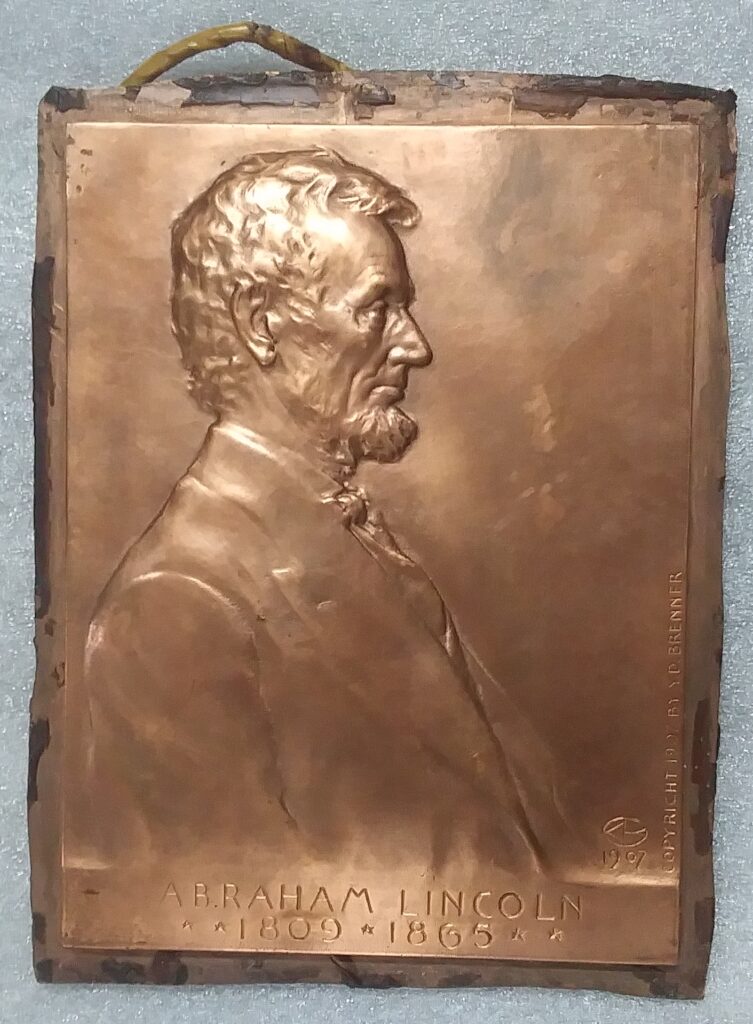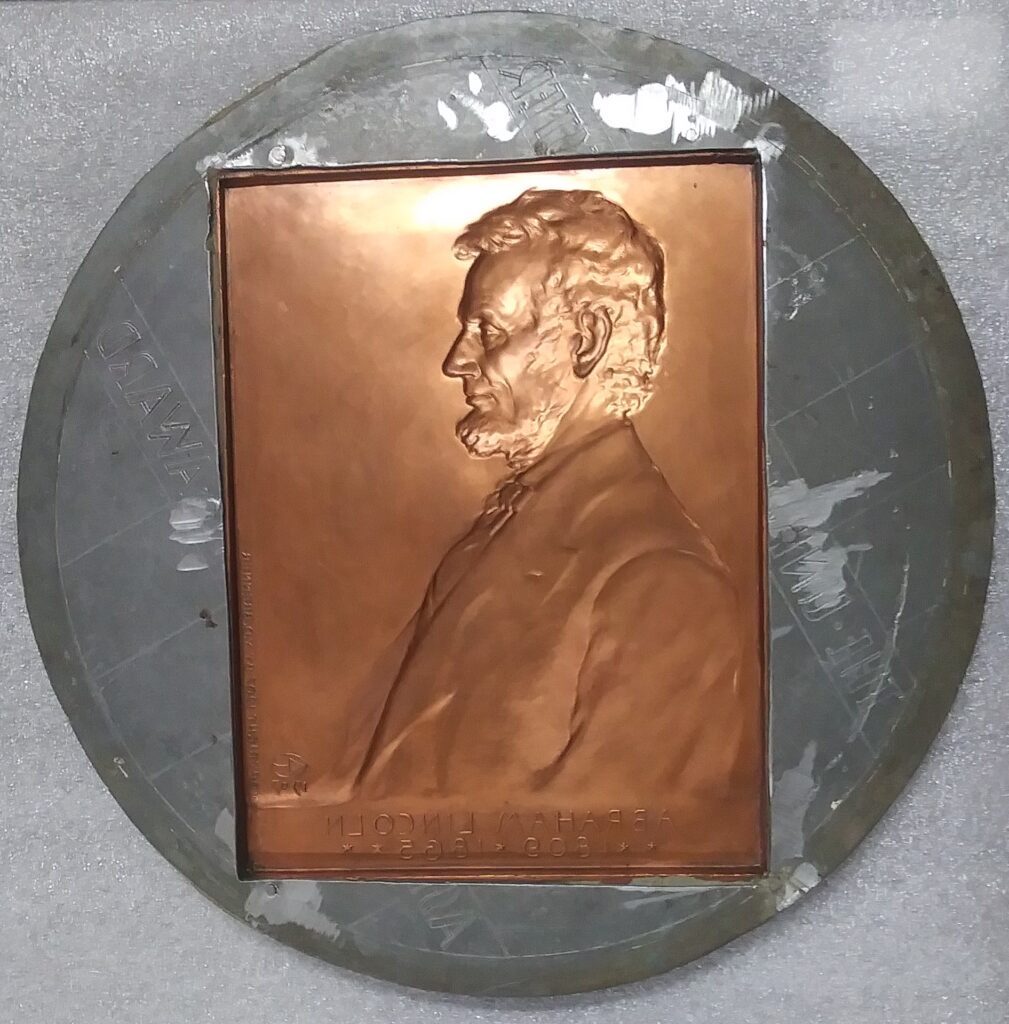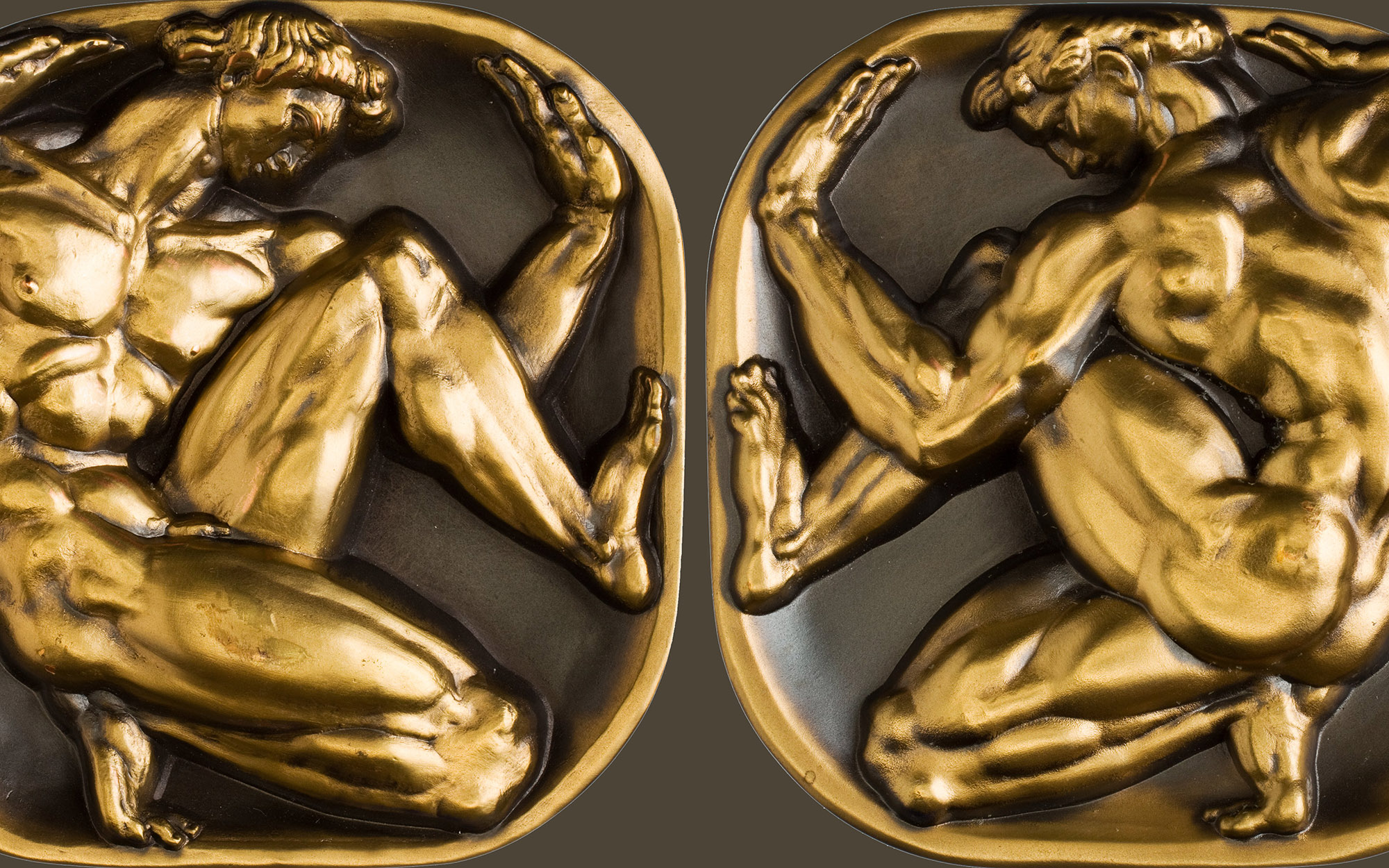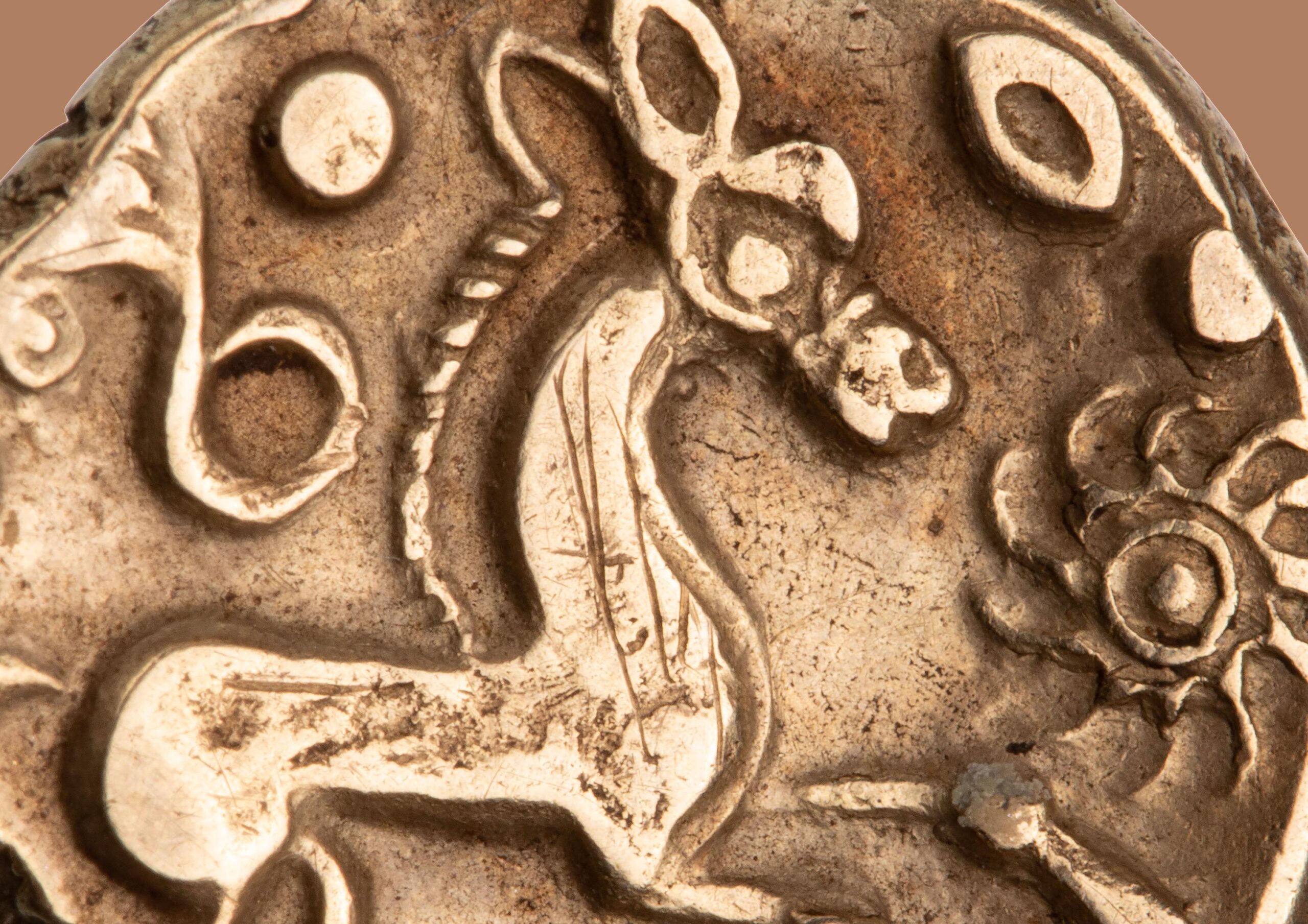Fame (and Infamy) Represented in the MACO Die Shells
Since repatriating the die shells of the Medallic Art Co. (MACO), organizing and cataloguing these pieces has become a curatorial priority. During this process, lots of interesting pieces come along (as well as some not-so-interesting pieces).

The die shell of fame is the 1907 Abraham Lincoln plaque by Victor D. Brenner (Fig. 1). This is, of course, the inspiration for the Lincoln cent—one of the most famous coins ever struck. This exact piece is not the original, but a later copy. Still, it is a breathtaking piece that more than likely relates to the 2009 centennial medal for the Lincoln cent, produced by MACO and commissioned by Dick Johnson and Mark Schlepphorst.
An interesting aside to this piece is the copyright. While copyrighted by Brenner in 1907, the plaque (even the original) has a misspelling: COPYRIGHT 1907 BY Y.D. BRENNER, instead of V.D. BRENNER. Despite this, Brenner maintained the copyright through his death in 1924, when it was transferred to his brother, Samuel Brenner. In 1929 and 1931, Samuel sold MACO several of Brenner’s works and designs, including the Brenner plaque. At the time, it became a MACO stock design, allowing it to be used for the 2009 centennial medal, the 1971 Brenner birth centennial, as well as others. In 2018, along with the acquisition of the physical medals, dies, and die shells, the ANS also acquired the intellectual property of MACO, such as the copyrights—including any remaining claims to the Lincoln plaque by Victor D. Brenner.

So far discovered, the collection includes two die shells for the Lincoln plaque by Brenner (though I know that others exist from when going through the images prior to my trip to Nevada). The first is a positive copper die shell, while the second is a combination of copper and zinc-plated epoxy (Fig. 2).

The die shell of infamy is for the Distinguished Service Award given to Kenneth Lay by the Texas Mid-Continent Oil & Gas Association in 1995 (Fig. 3).

Kenneth L. Lay (Fig. 4) began his career as an economist, working for Humble Oil from 1965 to 1968 while earning a Ph.D. from the University of Houston (1970). After a brief stint in the United States Navy and Department of Interior, he joined Florida Gas Transmission as an executive. Throughout the ‘80s, he jumped around the oil world; as president of Continental Resources, a petroleum exploration company out of Oklahoma City from 1981 to 1982; President, COO, and Director of Transco Energy Company (owner of the Transcontinental Pipeline) through 1984; and finally, as the CEO of the Houston Natural Gas Company. In 1985, InterNorth bought Houston Natural Gas and changed the name to Enron. His position gave him powerful friends, such as George H.W. Bush, George W. Bush, Gerald Ford, Bill Clinton, Dick Cheney, James A. Baker III, and many others.

When Lay won the Distinguished Service Award 1995, “in recognition of his distinguished service and able leadership in the development of the Texas oil industry,” he was at the top of his game. In addition to him sweeping the oil industry, he was amidst negotiations to replace Robert E. Allen as CEO of AT&T. The MACO die shell collection contains two copper positives—one with trimmed edges and one without (Fig. 5)—as well as an epoxy negative (Fig. 6).

His “able leadership,” however, turned out to be a fallacy. In 2001, Enron famously went bankrupt—at the time, the largest bankruptcy in U.S. history. 20,000 employees lost their jobs, billions of investor dollars were lost. On July 7, 2004, Lay was indicted by a grand jury on 11 counts of securities fraud wire fraud, and making false and misleading statements. Lay blamed a conspiracy instigated by short-sellers, rogue executives, and the media. In May 2006, he was found guilty of 10 of the 11 counts. Sentencing, however, never came. In July of that year, while awaiting his sentence, Lay died of a heart attack at his vacation in Snowmass, Colorado.
Today, Lay leaves behind a legacy of shame, mismanagement, and dishonesty. Between 1998 and 2001, he ranked among the highest-paid CEOs in the nation, and “earned” more than $220 in cash and stock from Enron. In 2009, portfolio.com ranked him as the third-worst American CEO of all time, behind Angelo Mozilo and Dick Fuld.




